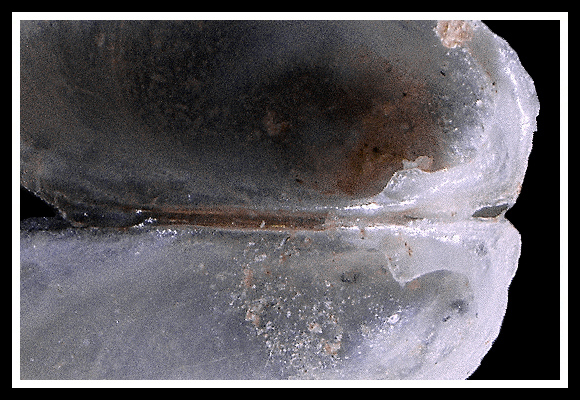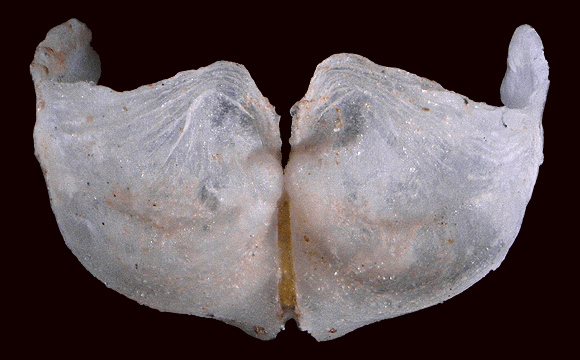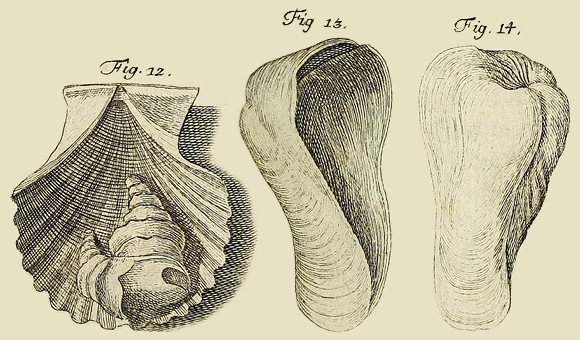
The animal lives in a cemented cubiculum, shallowly nested in some hard substrata (usually large shells, usually in the infralittoral). Its habitation differs from that of Rocellaria dubia in that it is not dug in the substratum but attached to its surface. – Original taxon: Gastrochaena cymbium.
Above, some drawings of the species in L. Spengler: “Beskrivelse over en nye Slaegt af toskallede Muskeler, som kan kaldes Gastrochaena, i tre foranderlige Arter, hvoraf hver boer i et forskielligt Ormehuus”, Nye Samling af det Kongelige Danske Videnskabers Selskabs Skrifter vol.2, Copenhagen 1793, figures 12 to 17 of the plate that follows the page 246.
Above, some drawings of the species in L. Spengler: “Beskrivelse over en nye Slaegt af toskallede Muskeler, som kan kaldes Gastrochaena, i tre foranderlige Arter, hvoraf hver boer i et forskielligt Ormehuus”, Nye Samling af det Kongelige Danske Videnskabers Selskabs Skrifter vol.2, Copenhagen 1793, figures 12 to 17 of the plate that follows the page 246.
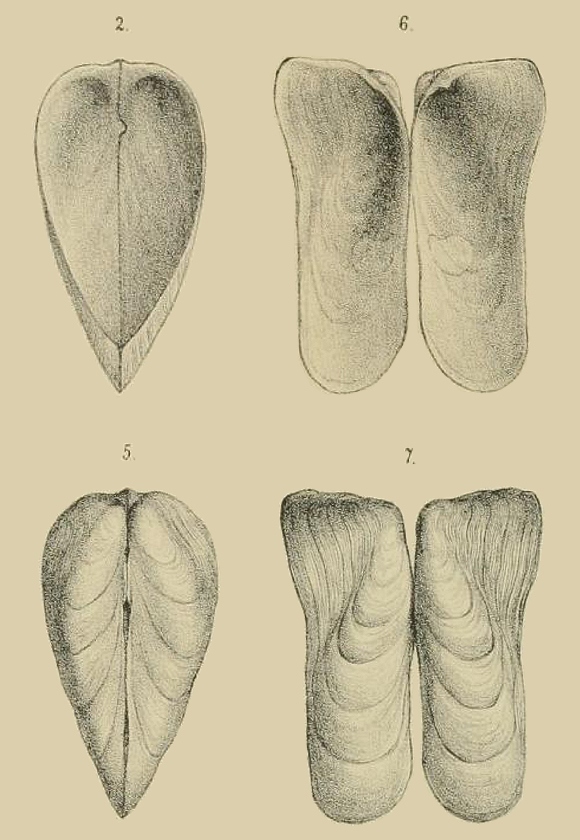
« The mussel lies enclosed in a calcareous casing, which consists of 6-7 interconnected rings. The foremost is inflated, head-shaped or spherical and the largest, […] and the last, smallest, has the opening for the outlet of the siphons. The calcareous casing usually sits on a foreign mollusc shell or is glued to the casing of a second individual. » – R. Sturany: “Expedition S.M. Schiff ‘Pola’ in das Rothe Meer, nördliche und südliche Hälfte. 1895/96-1897/98. Zoologische Ergebnisse XIV. Lamellibranchiaten des Rothen Meeres”, Denkschriften der Kaiserlichen Akademie der Wissenschaften, Mathematisch-Naturwissenschaftliche Classe vol.69, London 1844, via BHL.
Above: Gastrochaena deshayesi in Sturany, plate V.

« Gastrochaena cymbium Spengler, 1783 (Gastrochaenidae) is a bivalve that lives encapsulated in a cubicle which it constructs itself and which adheres to different types of substrates. This cubicle is multilobed on the outside and extended in its narrowest end by a small calcareous tube adorned with a few circular growth streaks and perforated in the shape of an 8. It is intended for the passage of inhaling and exhaling siphons. The calcareous tube protecting the siphons has two longitudinal hulls inside and rises slightly above the extremity of the cubicle. The part of the cubicle opposite the siphons is the widest and the highest. If the exterior of the cubicle is constricted, the interior is not segmented. Its outer part consists of limestone agglomerated with very rare sand grains. On the other hand, the interior is smooth and shiny. » –Delongueville & Scaillet: “Illustration de Gastrochaena cymbium sur Hexaplex pecchiolianus en Méditerranée orientale”, Novapex vol.6(4), Brussels 2005, p.129.
Above: two gutted casings on a 61mm high Hexaplex pecchiolianus (d’Ancona, 1871) from 25m deep, Yumurtalιk area, on the northern coast of Iskenderun Körfezi, SE. Turkey.
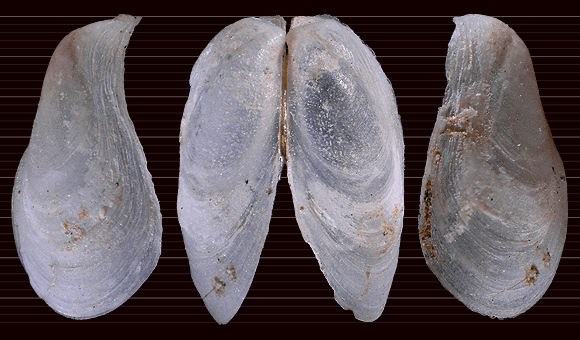
Sturany: « The shell is elongated, or almost quadrangular, strongly convex and twisted, rather thick-walled, widely gaping ventrally, so that a long heart-shaped hiatus arises… »
Above and below: a specimen from a nest attached to the shell of a Hexaplex pecchiolianus, Iskenderun Körfezi. 3,8mm.
